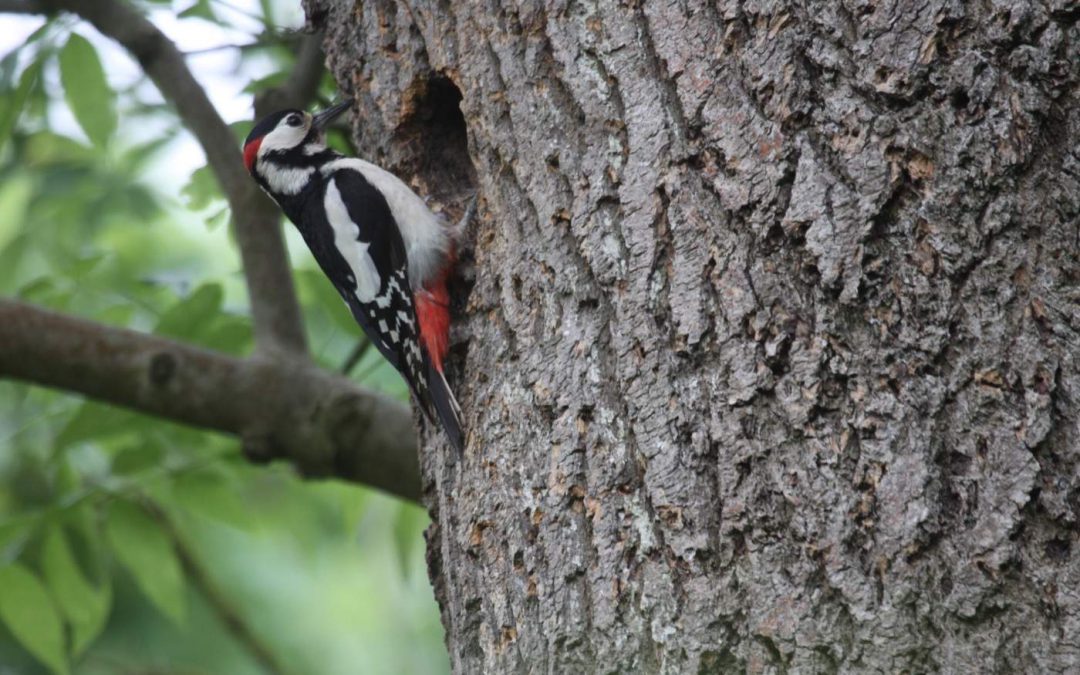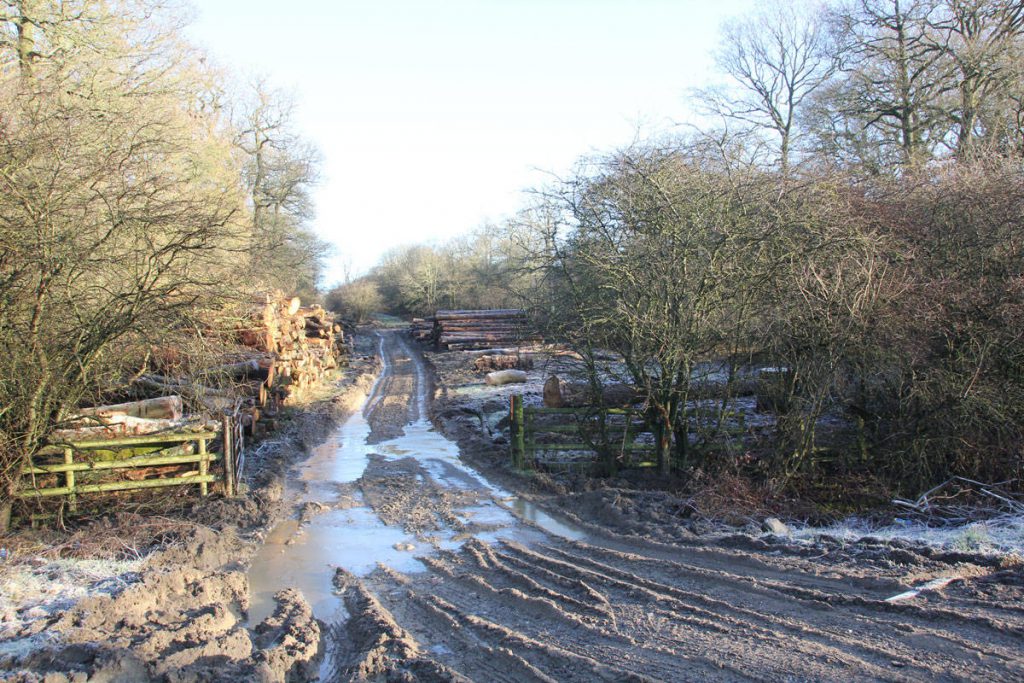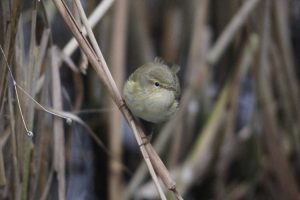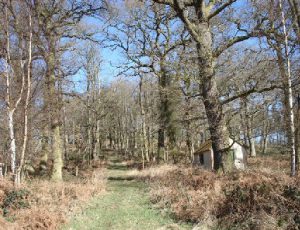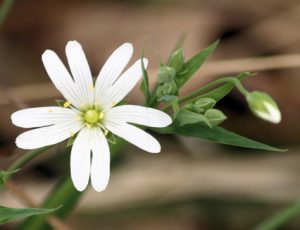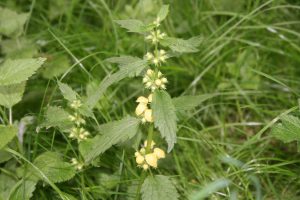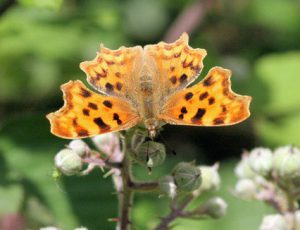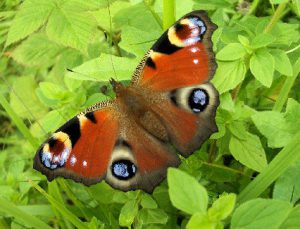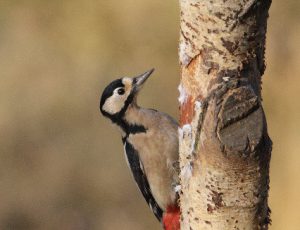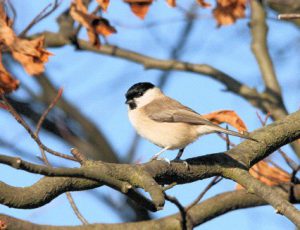A warmish morning, the sun coming through clouds at regular intervals, and 17 members and friends of the RNHS assembled at the main entrance to Burley woods, alongside the busy A606, where winter logging operations had left a slightly rough and muddy entrance.
This negotiated, members regrouped along the first ride, hearing the chiffchaff with his repetitive song, just like his name, and his occasional short “hooeet”, and then the busy and hurried slightly scratchy tune of the Garden warbler, all close to one note, sung from cover along the recently emerged leaves of the woodland edge habitat. These birds have only recently returned on their long journey from the south, and are busy competing to establish territories, in preparation for nesting.
Burley Wood is ancient woodland, the largest area of oak woodland in Leicestershire and Rutland, and protected as a site of special scientific interest.(SSSI). It is a special habitat, old oak woodland with open areas, and wide rides with hazel and hawthorn at the edges, giving cover for small birds. Some of the larger old trees are dead, giving good breeding habitat for some bird species, such as woodpeckers, nuthatch, jackdaws starlings, and under the higher canopy, bluebells flowering in profusion at this time of year.
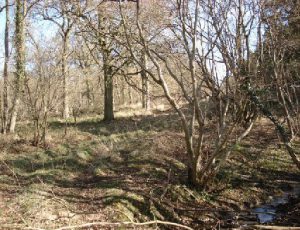
The group had just stopped and was discussing the differences between the blue Bugle and Ground Ivy, both of which were found together at the spot, when a woodpecker’s drumming was heard distinctly. We were about to say “Great spotted Woodpecker”, when it drummed again, and yet again, the drumming longer, and fading away at the end – typical of the Lesser Spotted Woodpecker. This woodpecker has been very scarce in Rutland for some time, and the group were very excited, but the woodpecker continued its wonderful territorial drumming, confirming our delight at finding this little woodpecker, returned to it’s former habitat, and probably now nesting, in one of the many dead trees.
Many species of woodland plants populated the edges of the rides, including yellow archangel among the bluebells, Greater, lesser and Marsh stitchwort, and smaller white flowers, Hairy and Wavy Bittercress, chickweed and three veined sandwort.
- Greater Stitchwort
- Yellow Archangel
The sun peeped from between the trees, lighting up the beautiful trunks of the taller trees, and the unmistakeable song of the Cuckoo was heard, insistent and penetrating, making his presence clear to all. Butterflies flitted along the rides, Peacock, an over wintered Comma, and later small and green veined whites and orange tipped butterflies were seen. A group of martins swooped overhead, and much higher swifts, with sickle shaped wings patrolled, feasting on the abundant insects above the woodland.
- Comma
- Peacock
A large clump of Dog’s Mercury was found in one ride, and on the leaves tiny newly emerged nymphs of the dark Bush Cricket, about 5mm in size, sunbathed and collected energy to grow into the much larger adult form. Bee flies flitted from flower to flower, dipping their long probosces (yes that’s how it’s spelt plural. I looked it up!) into the ground ivy flowers, and buff tailed bumble bees buzzed busily around. A frog hopper was observed on the grassy vegetation of the ride. The heavy looking black St Mark’s flies, seasonal insects, supposedly emerged on St Mark’s Day, 25th April, flew over rides, the males dangling long front legs.
Acid soil type was shown by the presence of a few delicate white early wood sorrel lowers; Willow warblers sang their beautiful falling cadence of notes, and Red campion and pink herb Robert were flowering. Several species of the lovely blue speedwell were found, causing much discussion and difficulties with identification, but lilac ivyleaved, and common field speedwell were finally agreed upon. Plants of germander speedwell were later found near to the entrance. The delicate pink cuckoo flower, or lady’s smock held their heads above the lower vegetation.
Reaching the final ride a large bird of prey was seen overhead, almost certainly a harrier, from it’s shape and size, but unfortunately an exact identification was not able to be made. A Great spotted woodpecker flew throught the trees with its “chick… chick” call. A marsh tit gave its explosive call from a low hazel bush, and its black cap and white colours were clearly seen. Finally, a jay called, and the Garden warblers and chiff chaffs continued their constant songs as we left the ride for road home.
